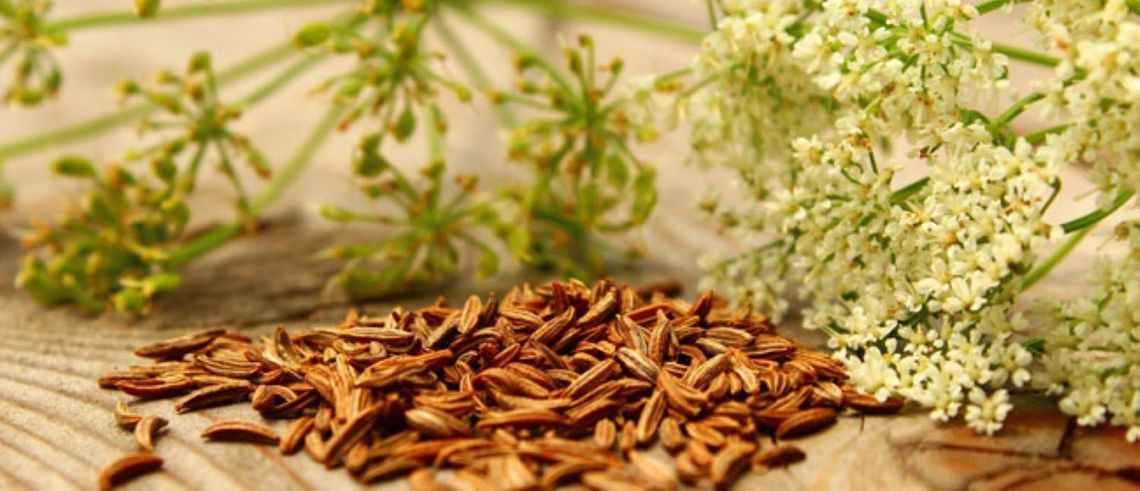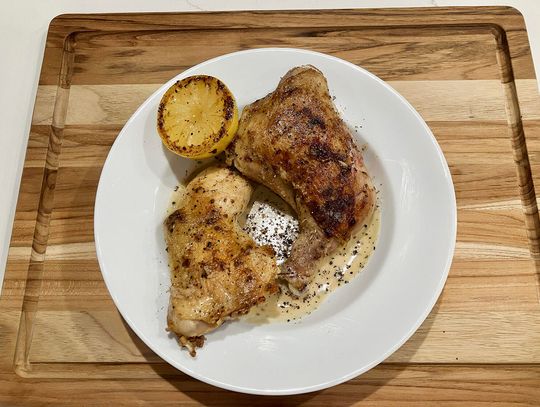Proudly displayed on a wall in Kelli’s Kitchen is a poster titled “The Taxonomy of Fruits & Vegetables.” It graphically depicts culinary plants' familial relationships in the context of how they are used in our kitchens. I can stare for hours (only slight hyperbole), chasing down my favorite veggies and reflecting on the unexpected connections. I find it fascinating that arugula, turnips, beets, Brussels sprouts, and broccoli all share mustard as a common ancestor. Today, I shall focus away from the genus Brassica and towards a smaller genus of culinary plants, Apium. Also known as Umbellifers, the Apiaceae family is populated with about 3800 species of herbs and woody shrubs. In the culinary space, we use umbellifers for their roots (parsnips and carrots), their stems (celery, lovage, and fennel), their leaves (angelica, dill, and chervil), and their seeds (cumin, anise, and coriander). Following a thread of the Apium rabbit hole* we find our Churchill County Library Spice Club flavor of the month: Caraway.
Caraway, also known as Meridian Fennel and Persian Cumin, is a biennial plant indigenous to West Asia, Europe, and North Africa. It has an intense and distinctive flavor that is sweet and musky with bready and vegetal notes. If you have not intentionally added caraway to dishes in your kitchen, your most likely encounter with this old-world spice is as an ingredient in a loaf of rye bread. Caraway pairs nicely with other members of its extended family and plays well in the sandbox with other spices of European origin.
Stop by the Churchill County Library in August for a sample of King Caraway, an heirloom variety cultivated for millennia across the lush oasis of Fayoum in central Egypt. Try one of the recipes below.
* See what I did there? Rabbit hole - Carrots.
Cabbage Salad with Caraway Seeds by Maren Ellingboe King
INGREDIENTS:
- 2 t Caraway seeds
- ¼ c White vinegar
- ¼ c Lemon juice
- 2 T Mayonnaise
- 1 T Sugar
- 1 t Kosher salt
- 1 t Ground pepper
- ½ c Olive oil
- 1 head Green cabbage, cored and shredded
- 1 Fennel bulb, trimmed, white and light green parts thinly sliced, fronds reserved
- 1 Red onion, thinly sliced
- ½ c Fresh ill or parsley, roughly chopped, for garnish
DIRECTIONS:
- Make the dressing: Heat a small skillet over medium heat. Add the caraway seeds and toast until fragrant, stirring constantly for 2 to 3 minutes. Transfer the seeds to a spice grinder or mortar and pestle. Crush until roughly ground.
- Add the caraway seeds, vinegar, lemon juice, mayonnaise, sugar, salt, and pepper to a large serving bowl. Whisk until combined. Slowly drizzle in the olive oil, whisking constantly until the dressing is emulsified.
- Make the salad: Add the cabbage, fennel, and red onion to the bowl with the dressing. Use your hands or tongs to toss until the salad is well-coated. Garnish with fresh herbs and fennel fronds. Let sit for 15 minutes before serving or cover and refrigerate for up to 4 hours.
Spring Carrot Pickles with Caraway by Martha Rose Shulman
INGREDIENTS:
- 1-2 c Thinly sliced carrots
- 2 t Caraway seeds
- ½ c Seasoned rice vinegar
- 1 T Sherry vinegar
- ¼ c Sugar
- 1 c Water
- 2 ¼ t Kosher salt
DIRECTIONS:
- Place the carrots and caraway seeds in a mason jar.
- In a large bowl, combine the vinegars and sugar. Bring the water to a boil, remove from the heat, and add to the vinegar and sugar mixture. Stir until the sugar is dissolved. Add the salt and stir well. Pour over the carrots and caraway, cover, and refrigerate for at least 2 days and up to 2 weeks. Shake the jar from time to time. Remove from the brine and serve.
Rustic Spice Mix for Breads
INGREDIENTS:
- 2 T Caraway seeds
- 2 T Coriander seeds
- 1 T Cumin seeds
- 1 T Fennel seeds
- 1 t Anise seeds
- 1 t Black peppercorns
DIRECTIONS:
- Individually toast spices in a dry sauté pan until fragrant (1-2 minutes each).
- Combine in a mortar & pestle or spice grinder and roughly crush.
- Add to bread dough or sprinkle on grilled flatbread.









Comment
Comments